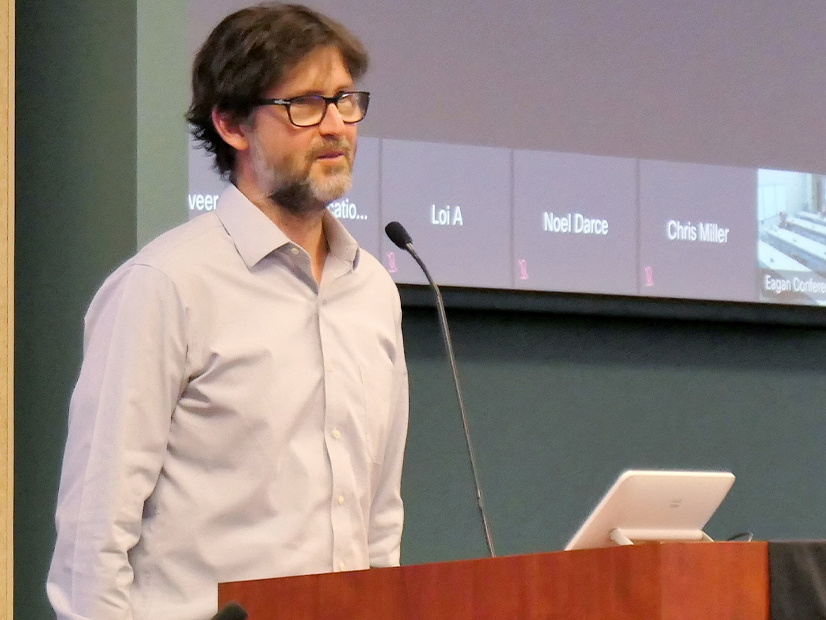CARMEL, Ind. — MISO says it is leaning towards a simple and existing method to handle the market participation of a growing number of combined battery storage and renewable energy resources.
The grid operator last week released a draft market participation model under which hybrid resources’ components will be required to register and participate separately by resource type.
MISO currently maintains two definitions for resources that share a point of interconnection: “co-located” or “hybrid.” While co-located resources participate in the market separately, hybrid resources would participate in the market as a single resource. (See MISO Prepares Hybrid Participation Model for Unknown Numbers.)
Bill Peters, a market design adviser for the RTO, told a Market Subcommittee meeting Thursday that there are advantages to requiring components of a hybrid resource to operate individually. He said renewables can still confidently use MISO’s forecasts for intermittent resources, and storage components of hybrid resources are free to clear as operating reserves. He said a single-offer hybrid participation limits MISO’s visibility into the capabilities of the multiple resource types that comprise the hybrid resource.
“As we learned from Ghostbusters, this will help prevent us from crossing the streams, which we know is bad,” Peters joked.
He said MISO’s proposal will prevent storage assets from being “shackled” to renewable resources and storage will be free to operate independently and “capture otherwise curtailed or clipped renewable generation.” Peters said resources sharing physical infrastructure already can be dispatched and settled separately.
The RTO has about 1 GW of hybrid resources projects that have executed generator interconnection agreements, though none are coming online over the next year.
MISO’s hybrid IC queue numbers may underrepresent the number of hybrids that eventually will materialize in the footprint. Staff has said interconnection customers sometimes request separate applications for the storage and generation components; others request surplus IC capability for storage that is added later. Clean energy advocates have been pressing MISO for several years to make its markets friendlier to hybrid resources.
Staff said that it is challenging to build a singular hybrid-participation model because any number of resource combinations are possible.
MISO is unable to provide forecasts for partial intermittent resources, Peters said, and wouldn’t know when hybrid resources are operating under a generation designation or a dispatchable intermittent resource designation.
Peters said MISO staff went over a “legal reading of the tariff” and found few clear answers as to how hybrid resources should participate in the markets. “It becomes clear that when a lot of answers are ‘maybe,’ that’s maybe not the best,” he said.
Peters said if MISO’s idea works well, it may “obviate” the need to work out a comprehensive participation model for hybrid resources.
“This may be the best way to operate these resources,” he said.
Peters said MISO might want to update software so it can create a “family relationship” to make sure resources are maintaining the megawatt limit of a shared interconnection point. Market systems currently lack the capability to manage shared interconnection limits.
Peters asked for stakeholders’ input on the “good, the bad and the ugly” of the proposal. They have until March 16 to weigh in.




